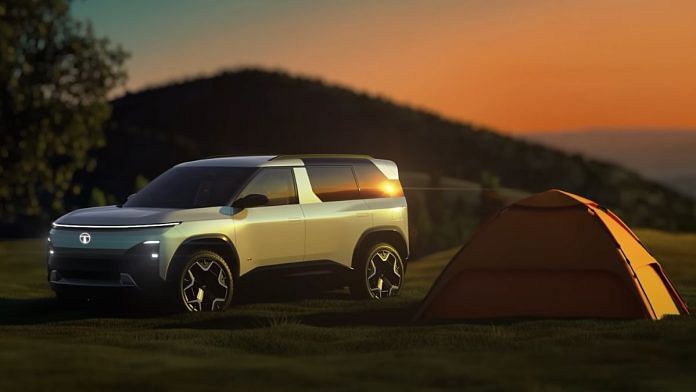We have seen the ‘global premiere’ of the Skoda Kylaq subcompact SUV and the launch of Mahindra’s two new electric SUVs: the BE 6 and XEV 9e. In the coming weeks, we’ll also see the launch of the Kia Syros SUV that will slot between the Sonet and Seltos. MG Motor India will be launching the Cyberster roadster next month and Hyundai India is already planning the drive event for the battery-electric version of the Creta, its name still a secret. Additionally, Maruti Suzuki is launching the eVitara, unveiled last month in Milan by Suzuki Motor Corporation.
All the vehicles mentioned above will be launched in the first three months of 2025 and there are many more on the way. Particularly—and I’m sorry if this sounds harsh—from carmakers who seem to have lost their way in the Indian market and are now taking their possibly last, vital shot at relevance.
Global giant Stellantis, which operates the Citroen and Jeep brands in India, will likely be bringing a subcompact SUV of its own, which one suspects will be the Jeep Avenger. There will also be a battery-electric version of the Citroen Aircross. That said, recent reports have indicated that India will not be getting the next generation of the Jeep Compass.
The Franco-Japanese Renault-Nissan alliance is also finally bringing relevant products to the market after years of confused strategy. This will be based on the third-generation Renault Duster. The Duster, which, in a way, gave birth to the popular compact SUV market dominated by the Hyundai Creta and Kia Seltos today, had skipped a generation in India. Nissan made an attempt with the updated Kicks, but both carmakers will now launch a seven-seat, extended wheelbase of their cars.
Returning nameplates
Back in September, American giant Ford announced its return to India, three years after what I feel was a wholly misguided exit. Ford had decided to double down on the Chinese market and left India, but as Chinese carmakers start to dominate their home market, Ford is coming back, starting with the third-generation Endeavour. While the large SUV will likely be introduced as a knocked-down kit, Ford had said that manufacturing will restart at its erstwhile Chennai plant and likely be focussed on electric vehicles, possibly a specific one for India.
Talking of returning nameplates, Tata Motors plans to bring back the Sierra. If you are old enough to remember that car, it is one that I can’t wait to see return to India, albeit in electric form. The Sierra will be twinned with the electric version of the Tata Harrier, which is also expected early in the year.
Now, this is in no way a comprehensive list. I have not mentioned any of the luxury carmakers, whose sales are actually booming this year. Toyota will launch its version of the eVitara and MG Motor, which has now partnered with Indian conglomerate JSW, has said that it will be launching a new car every quarter. Generation updates are also expected for the popular Hyundai Venue and Kia Seltos, although these could slip into 2026. Of course, Kia is expected to launch some electric cars, albeit not the global EV3 or EV5 but more likely electric variants of the Seltos and Syros.
Honda, Maruti Suzuki, and Toyota have indicated that more strong hybrids are on the way. During the Honda Amaze launch, Takuya Tsumura, president and CEO of Honda Cars India, told me that after Uttar Pradesh cut duties on strong hybrid cars, the hybrid variant of the Honda City now accounts for a quarter of its volume in the state compared to the national average of 10 per cent.
Also read: Mahindra’s BE 6e and XEV 9e ‘just happen to be electric’. They are all about tech
Charging anxiety
This brings me to my final point about 2025: Expect a lot more lobbying by manufacturers. If you have read this far, you must have worked out that there are a lot of electric vehicles on the way. But as I have mentioned in many previous columns, electric vehicle sales have been tepid. So far, the key reason for this was a ‘lack of choice’ as Tata Passenger Electric Mobility (TPEM) dominated the space. But as we now know, that will change in 2025, with at least 10-15 new electric vehicles being launched.
But will that change consumer behaviour? That, I genuinely do not know. I believe that next-generation electric vehicles will resolve range issues, but ‘charging anxiety’—the availability of chargers, particularly fast chargers—remains a problem on long drives.
Moreover, my experience driving a BMW iX50 over the past month has revealed that many high-rise housing societies across India, where the audience for passenger EVs resides, have strange rules on private charging points. And unless you have your own charger, the economic benefits of an EV are marginal at best. That said, if you live in the NCR, a green numberplate is ‘GRAP proof’ as police challan old vehicles.
But this doesn’t mean that launches are done for 2024. With the recent launch of the Honda Amaze, we’re likely to find out whether small sedans still make sense in India.
Kushan Mitra is an automotive journalist based in New Delhi. He tweets @kushanmitra. Views are personal.
(Edited by Prasanna Bachchhav)






